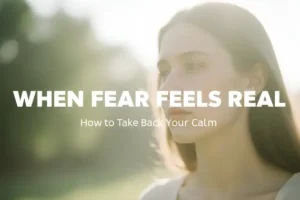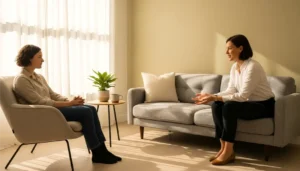When building a house, we start first with laying the foundation. Otherwise, our beautifully assembled and decorated house would come crashing down with the first weathered storm. In relationships, we need the same firm base. The importance of developing a strong foundation with your partner affords both partners the confidence that we will get through troubles together and eases tension at the first sign of conflict. You may be asking yourself, what does a strong foundation look like in a relationship and do I have one? The answer to this question is a simple one. It is a secure attachment with your partner – a sense that your partner is there for you, has your back, and will come when you call. A secure attachment allows each partner to feel confident that even when apart, we are connected to each other. In order to create a secure attachment with your partner, there are three characteristics that need to be present: accessibility, responsiveness, engagement – or A.R.E., for short.
In terms of gauging accessibility, we ask more than just whether my partner is present in the relationship. Accessibility considers emotional and attentional availability – how easy is it to reach my partner physically and emotionally when I call for him or her. Can I reliably get my partner’s attention? Are we prioritizing each other or do work, hobbies, children, etc. come first? Accessibility requires a willingness to show our partners that they are a top priority and matter to us – that we willingly share our time and attention with them.
Responsiveness refers to showing up for each other with connection and comfort if one of us signals we are anxious or unsure. When responsive, we tune into our partner’s feelings and needs. We seek to meet those emotions and needs with sensitivity, acceptance, and compassion. Fundamentally, responsiveness is responding well to signals that one partner needs the other to come close in the relationship.
When assessing engagement, the key question is whether you are positively involved in one another’s inner lives. This involvement translates to confiding in one another, feeling very comfortable being close to and trusting one another, and sharing dreams and vulnerabilities, doubts and worries. There is established safety when taking emotional risks with each other, as well as an acknowledgement that each partner cares about the hurts and fears of the other and provides comfort and reassurance. When engaged, both partners regularly express affection and caring in words, gestures, and actions.
Answering yes to the A.R.E. questions above is a good indicator that there is a secure connection with one other and a secure base for the relationship. If you answered no to any of these questions, this does not mean your house is built on a sink hole! Secure attachments can be developed with time and attention. Many couples seek guidance in therapy or from relationship workshops to strengthen their connection and rekindle the spark in their relationship. Just as you would consult an architect to assist in the house building process, there are therapists skilled in relationships to assist you in reinforcing the structure of yours.




